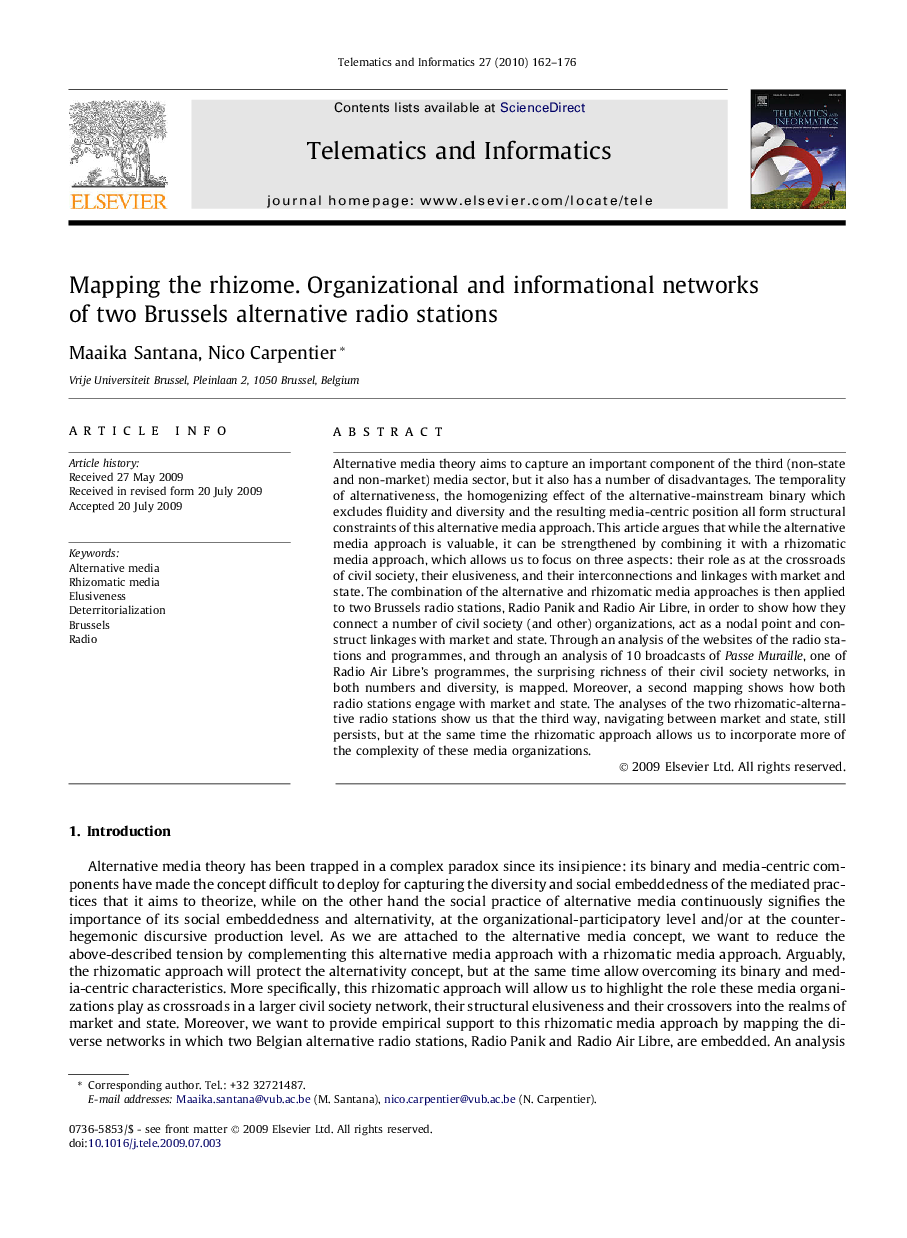| Article ID | Journal | Published Year | Pages | File Type |
|---|---|---|---|---|
| 466109 | Telematics and Informatics | 2010 | 15 Pages |
Alternative media theory aims to capture an important component of the third (non-state and non-market) media sector, but it also has a number of disadvantages. The temporality of alternativeness, the homogenizing effect of the alternative-mainstream binary which excludes fluidity and diversity and the resulting media-centric position all form structural constraints of this alternative media approach. This article argues that while the alternative media approach is valuable, it can be strengthened by combining it with a rhizomatic media approach, which allows us to focus on three aspects: their role as at the crossroads of civil society, their elusiveness, and their interconnections and linkages with market and state. The combination of the alternative and rhizomatic media approaches is then applied to two Brussels radio stations, Radio Panik and Radio Air Libre, in order to show how they connect a number of civil society (and other) organizations, act as a nodal point and construct linkages with market and state. Through an analysis of the websites of the radio stations and programmes, and through an analysis of 10 broadcasts of Passe Muraille, one of Radio Air Libre’s programmes, the surprising richness of their civil society networks, in both numbers and diversity, is mapped. Moreover, a second mapping shows how both radio stations engage with market and state. The analyses of the two rhizomatic-alternative radio stations show us that the third way, navigating between market and state, still persists, but at the same time the rhizomatic approach allows us to incorporate more of the complexity of these media organizations.
